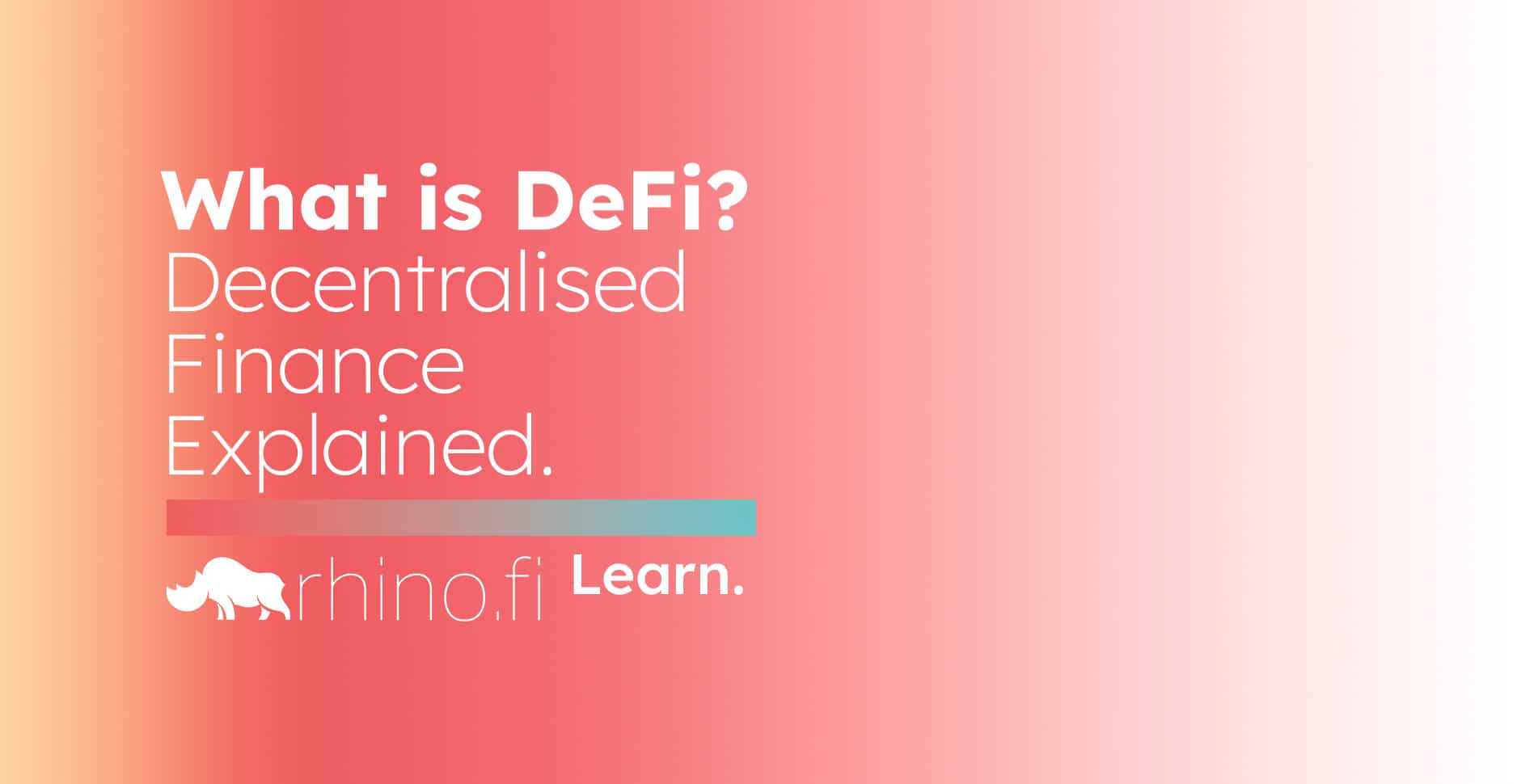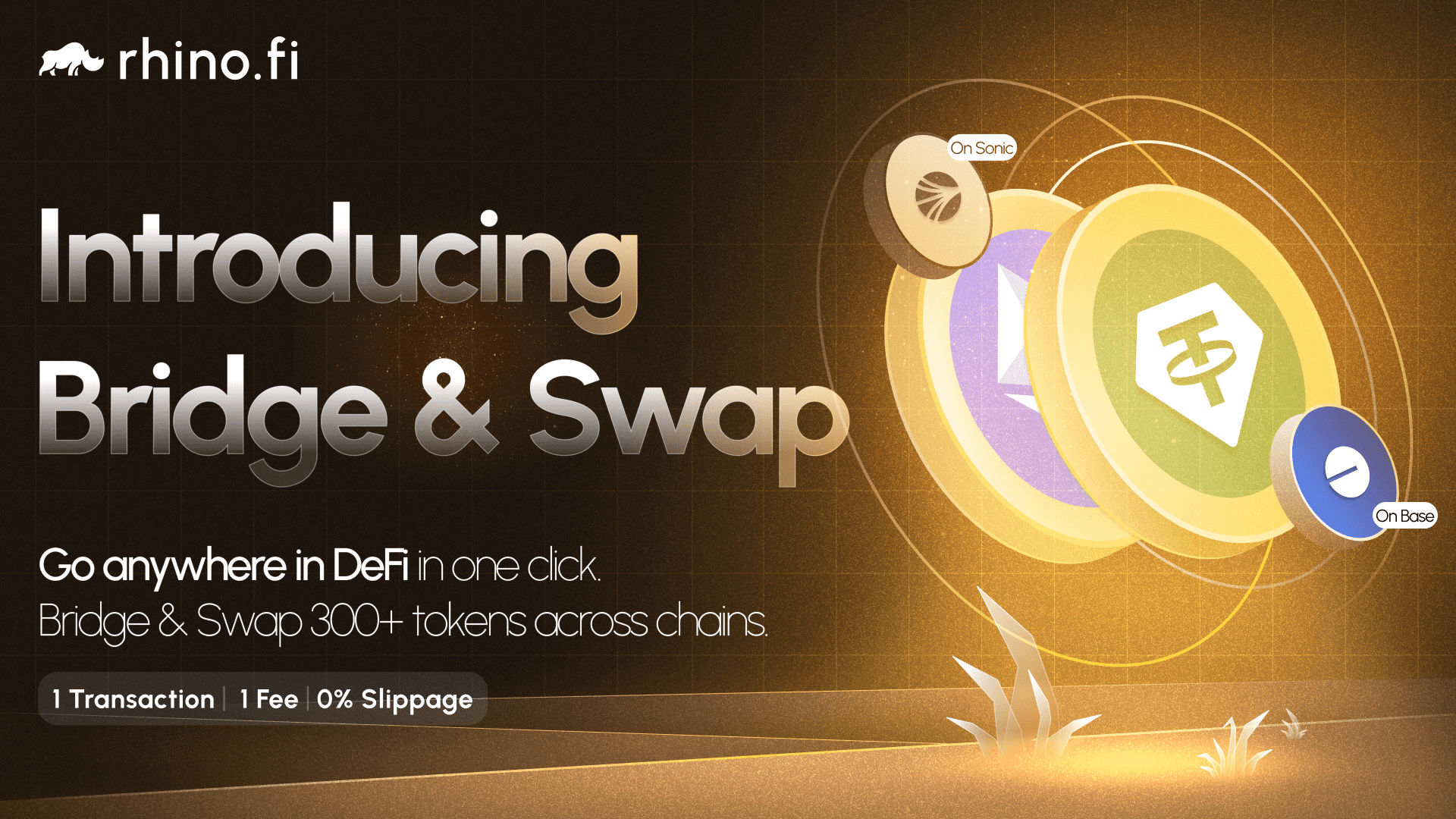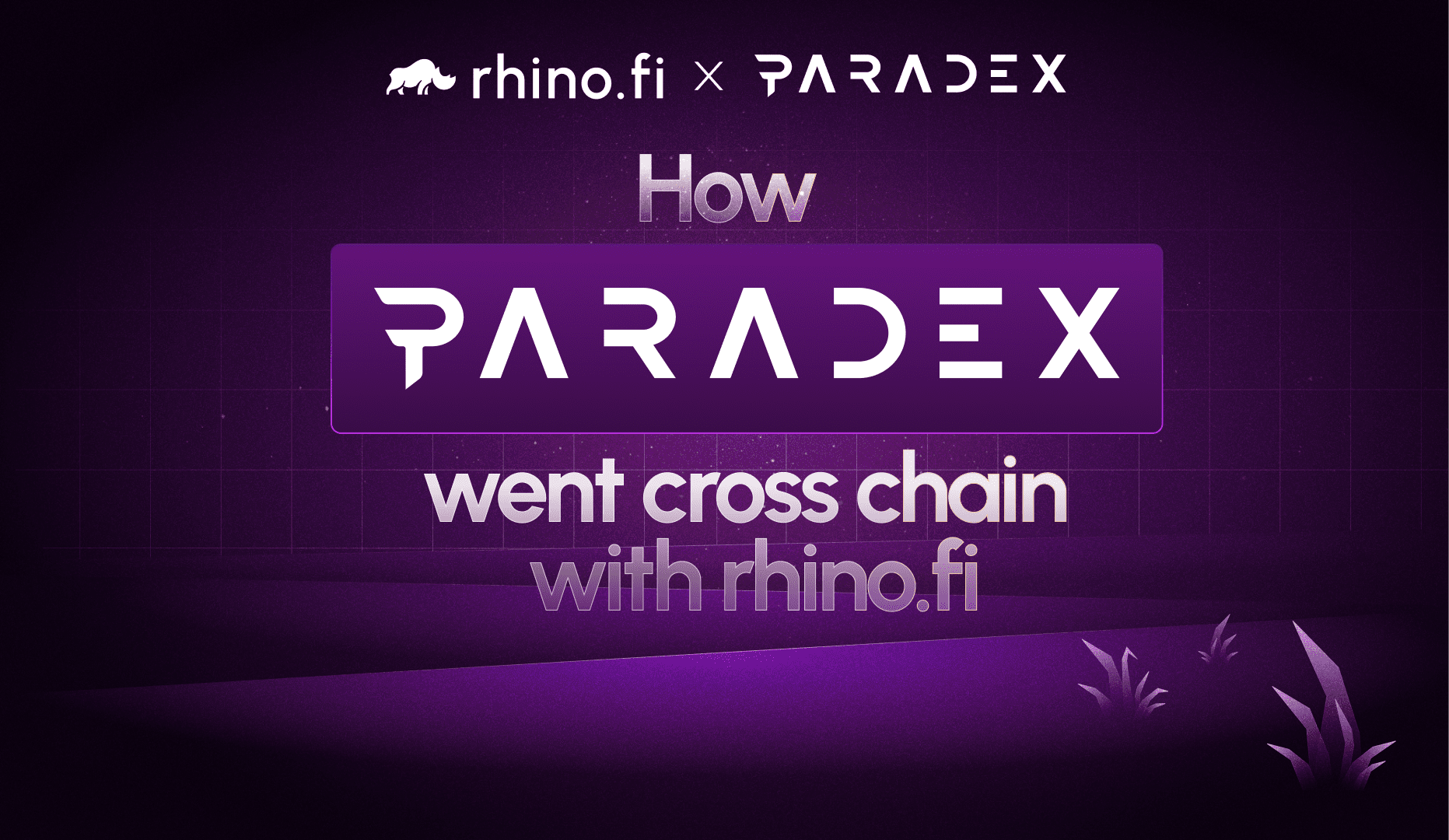Decentralised finance, or DeFi, is a reboot of the traditional financial system which removes the need for central intermediaries such as banks, exchanges and pension funds. No-one owns it and anyone can access it.
This new system harnesses the potential of decentralised blockchains such as Ethereum, which can execute transactions without requiring a human to oversee the process.
On these blockchains, users can trade, lend and invest, and the technology itself will provide authorisation. These services are fair, transparent and, above all, they’re always open.
However they are also quite complex, so in this episode of RhinoLearn we’re going to take a deep dive into DeFi – starting with a look at the evolution of traditional centralised finance.
How centralised finance emerged
The story of money has many chapters.
- We began by bartering goods, then moved onto metal coins.
- Then, with the creation of the printing press, we started using paper, too.
- The growth of the retail banking system enabled us to deposit our savings rather than stashing them away in our cupboards and under our beds.
- Finally the growth of apps, websites and ATMs has given us virtual funds in place of physical wealth.
As money has become more sophisticated, so its possibilities have increased.
For a long time money was simply a means of exchange between two people in the present, but over time we have created concepts like debt, credit and dividends, increasing our spending power beyond our immediate wealth.
The first merchant banks, as we know them today, were established in the Middle Ages. The first pensions were issued in the seventeenth century. The first mortgages and stock exchanges were established in the 1800s. Each new innovation has expanded the potential of money, weaving its complex web ever tighter.
This is what we mean by finance: the universe of money, the labyrinth of functions and services which have been erected on top of traditional bartering.
And with each new expansion of money, a central body has sprung up to oversee it. Some have been created by governments, others have simply created themselves to cash in on the revenue stream.
Your local bank is the most obvious example. They decide how much you can borrow, what sort of card you can have and whether you can have a mortgage. They can even block your transactions if they suspect something is suspicious.
But at the other end of the scale, you have national banks like the Bank of England or the Federal Reserve in the U.S.. These institutions decide how much interest we pay to borrow money, how much our everyday goods are worth (by manipulating inflation) and how much money our local banks can lend us.
But is all this centralisation such a bad thing?
Not always. Centralised finance offers a lot of in-built protections – for example, when our bank blocks our transactions, it’s usually to prevent fraud, and sometimes this can be a crucial backstop.
However, we lose a huge amount of money in charges to these central bodies. According to studies in the UK in 2018, the average banking customer paid out £150 ($195) in banking fees over the previous year. You could get a nice return flight somewhere sunny with that amount of cash.
More importantly, these central bodies are typically unelected and unaccountable. They can do things that actually harm our interests – with no repercussions.
Here’s a quick example. Over the course of 2020, the U.S. Federal Reserve, America’s central bank, embarked on a furious programme of money-printing. By the end of 2020, almost a fifth of all dollars in circulation (that’s to say, all the usable dollars from all of history) had been printed that year.
The Fed did this to galvanise the U.S. economy, but it also devalued the money people already had. An item that previously cost $1 suddenly cost $1.20 to keep up with inflation. So for the ordinary person, life suddenly became a lot more expensive.
And who could these ordinary people hold accountable? No-one. The Fed’s governors were answerable only to then-President Donald Trump, so no matter how whacky their policies, they were protected from the consequences.
Ok, so how do blockchains help?
Decentralised finance is made possible by a new generation of blockchains, which are known as programmable.
The first generation, led by bitcoin, were non-programmable. This meant their functions were limited: the bitcoin blockchain, for example, only allows you to buy and sell coins.
However, programmable blockchains allow you to add new functions. Users can write their own programmes on top of the blockchain in the form of smart contracts, chunks of code that trigger set actions in response to specific user behaviours.
You can read about smart contract programmes in our explainer post here, but essentially they work like this:
IF A user performs action X | THEN The programme will perform action Y |
With these smart contracts, we can create complex financial platforms and applications on top of the main blockchain. For example, we can build:
- Lending platforms that are programmed to loan money to users with a set value of assets in their portfolio.
- Investment platforms that are programmed to give users the best price on each order.
- Trading platforms (like rhino.fi) which authorise trades and swaps with intelligent calculations.
In all these cases, we can remove the middleman and create a totally permissionless system. The smart contract will essentially authorise itself, once the user has entered the required input.
What are the advantages of decentralised vs centralised finance?
Actually there are loads of advantages, all based on the openness of blockchains and the way they break down barriers.
Here are some of the most important ones:
- Cost-effective. Banks and other financial institutions can drain huge amounts of money from our accounts. Blockchains don’t do that.
- Transparent. A blockchain is essentially a giant open database, and everyone can see everything. So there’s no chance of users hiding malpractice.
- Irreversible. Once a block in the chain is written, it can’t be destroyed. This adds another layer of security.
- Fair. The rules of smart contracts are the same for everyone, no matter their background.
- Universal. Anyone can access DeFi opportunities, regardless of demographics, credit history or any other prejudicial factor.
DeFi takes all the security benefits of traditional finance and bolts on a whole bunch of new ones, suited to today’s connected world. As global travel and nomadic working increases, the concept will only become more important.
So, to summarise:
- Finance is the universe of money – the labyrinth of services we use every day.
- The financial world is overseen by a group of powerful individuals and institutions.
- While this centralised control has its advantages, it also has risks and drawbacks.
- Blockchain technology provides an alternative, allowing the creation of decentralised financial services that don’t require a middleman.
- The advent of smart contracts enables us to build new programmes on top of existing blockchains, and thereby continue to expand the possibilities of DeFi.
If you enjoyed this edition of RhinoLearn and want to dig further into the issue of smart contracts, check out our dedicated explainer here.





